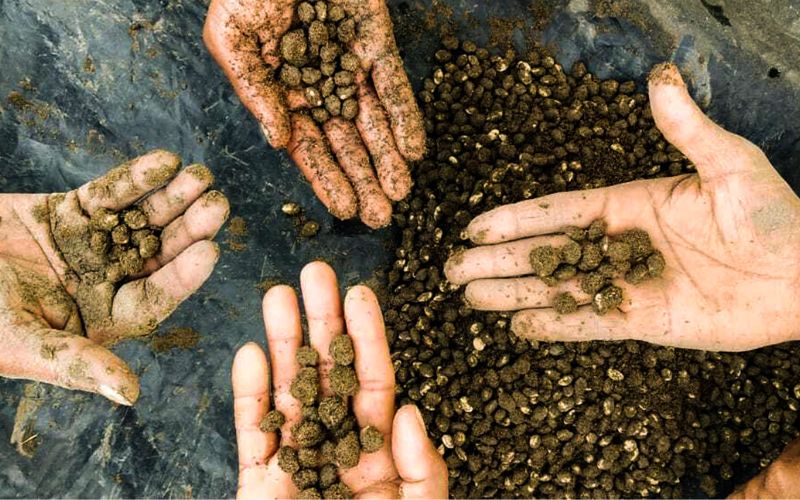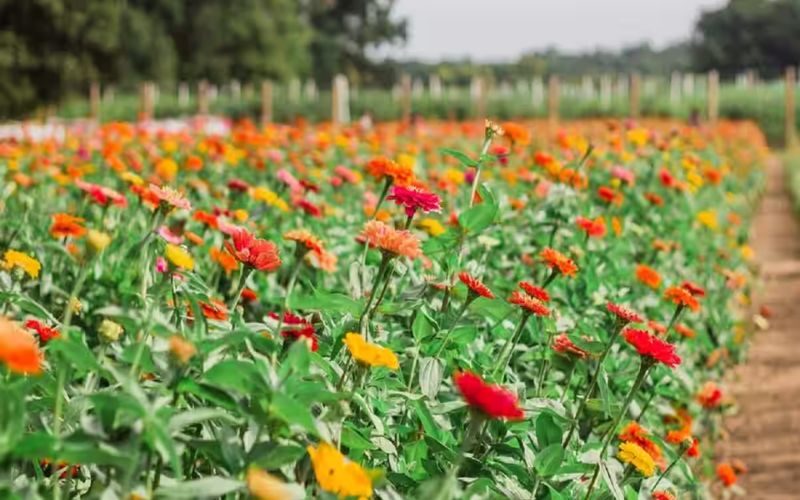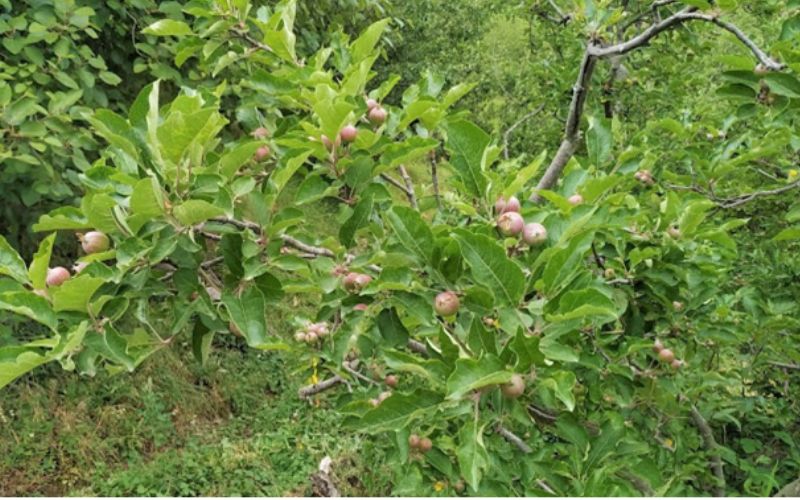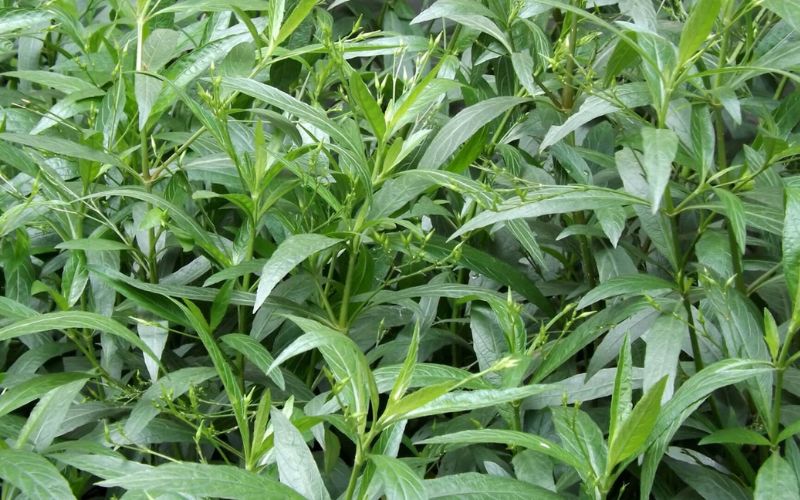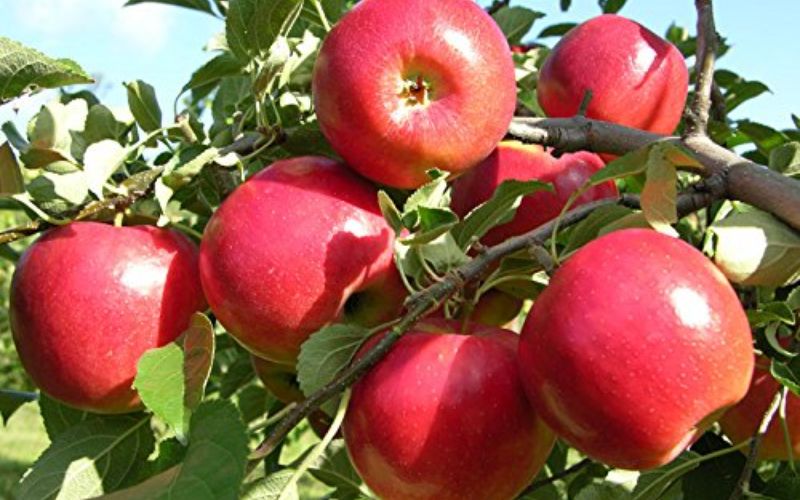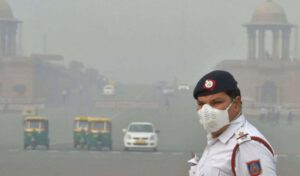PLANTING PROSPERITY : A drive to fight climate risk
By SHRI RAM SHAW
New Delhi: As the world is struggling to combat climate change, one idea – planting trees – seems to be taking hold as a panacea for curing the ills of pollution, soaring carbon emissions, and degrading soil health. Most saplings, after being planted, also need to be watched over and nurtured before they grow strong and independent, and begin their work in sequestering carbon. Caring for and monitoring planting efforts over time are critical, but have not yet become a core part of tree-planting drives and programs.
Low survival of saplings, unsuitable planting sites, lack of good quality seeds, wrong trees planted in the wrong places and large-scale planting without a plan are some of the reasons that tree plantation drives are not always successful in the long term.
However, the ecosystem services rendered by plantation crops need to be understood, assessed and realized for resilient plantation systems in India. New crop varieties, cropping systems, and agricultural management strategies are needed for long-term adaptation of plantation crops to climate change.

The relevance and importance of planting trees have only grown with each passing day. Deforestation has resulted in devastating floods and landslides. The significance of tree plantation can also be emphasized for forest conservation and wildlife protection. Wild animals are facing a scarcity of inhabitable forest areas as lands are cleared for farming and industrial purposes.
Because urban areas lack trees, they suffer from severe problems such as smog and polluted air. The “Tree Plantation” becomes a long-term solution to such problems. Vehicle exhaust, wood and coal combustion, factories and industries all emit hazardous pollutants and greenhouse gases into the atmosphere.
The central government is allocating funds through the Compensatory afforestation fund management and planning account (CAMPA) to carry out such massive “tree plantation” campaigns in both urban and rural areas. State governments are also taking extensive measures to improve forest and tree coverage. Non-governmental Organizations (NGOs) in the country are also taking proactive steps to encourage ordinary people to participate in “tree plantation” programmes and to raise awareness about the importance of tree plantation in combating climate change.
Working to increase the overall green cover of the National Capital Region (NCR), the Commission for Air Quality Management in NCR & Adjoining Areas (CAQM) recently held a series of consultations and review meetings to draw the roadmap and further finalize Greening/ Plantation Action Plan for the year 2023-24.
Greening is one of the major steps for mitigation of air pollution and the Commission has been laying special emphasis on large-scale greening/ dense plantation/ urban foresting initiatives including the Miyawaki Technique across the entire NCR.
The implementation status of plantation activities to increase green cover for the year 2022-23 was also reviewed in meetings held with the concerned NCR State Governments.
Plantation drives increase UP’s green cover
With the aim of making Uttar Pradesh a green state, the Yogi government has launched a mega tree plantation campaign in mission mode. The State has set a target of plantation of 35 crore saplings this year. 30 crore saplings were planted on 22nd July, whereas five crore saplings were planted on 15th of August.
The theme of this year’s plantation drive is ‘Ped Lagao, Ped Bachao’ which means ‘plant trees, save trees’. Different Ministries were given targets for this plantation drive and the whole State machinery worked in tandem to achieve the goal of plantation of 30 crore saplings. Last year, the State achieved a record of planting 35 crore saplings and this year the same target had been fixed.
Green cover in Uttar Pradesh has increased by 9.23% in the last six years, reveals the latest Forest Survey of India. Even before the beginning of the massive plantation campaign, the Yogi government set a record of planting a total of 136.98 crore saplings in the state between 2017-18 and 2022-23. This includes 49.88 crore saplings planted by the forest department and 82.1 crore saplings by other departments in the state.
According to the Forest Survey of India report, there has been a significant increase in the forest cover and the tree cover in U.P. While there has been a total increase of 417 square kilometres (0.18%) in forest cover, an increase of 377 square kilometres (0.16%) has been recorded in the tree cover so far. The total green area of the state has increased by 794 square kilometres with a total increase of 9.23%.
Trees over a hundred years old are being preserved and given heritage status in the state. The state government is laying a special focus on planting saplings of different species in the state to eliminate environmental imbalance and achieve inclusive development. The government’s emphasis is on planting trees like teak, rosewood, jamun (Indian black plum), arjuna, guava, drumstick, amla (gooseberry), neem, and bamboo. On the instructions of chief minister Yogi Adityanath, the work of planting a maximum number of industrial and timber trees is also being done in the state. Apart from this, fruit-bearing, medicinal and aromatic, environmental and fodder, ornamental and other plants have been planted in every part of the state.
Setback for DDA projects
The Delhi Development Authority (DDA) has also suffered a loss of crores of rupees in Yamuna floods. DDA is working on 10 different projects for beautification along the banks of Yamuna within a radius of 22 km from Palla to Okhla barrage. Recently, in order to pass the budget for the year 2023-24 in the board meeting of DDA chaired by LG VK Saxena, a provision of Rs 405 crore was also made for the said projects.
Along with Asita East and Bansera, eight other projects are also said to be in the works for a long time. Under this, 80 thousand trees have been planted, 29 lakh carpet grass of selection forest category has been planted. Apart from this, a lot of money has also been spent on sculptures, footpaths, benches, huts and fountains etc.
One of the main reasons behind speeding up this work is to make the banks of the Yamuna attractive within the stipulated time on the instructions of the high-level committee constituted by the NGT for cleaning the Yamuna, alongwith Asita East and Bansera. There was also a plan to organize some activities of G-20, but the flood in Yamuna ruined everything.
Now, all the projects will have to start afresh. There was minimum loss at Bansera because it is at a higher height. If experts are to be believed, the work that DDA was doing on the banks of the Yamuna was not in accordance with the rules of the flood zone. That’s why there was so much destruction there. No construction work should be done in the flood area. Trees and plants should also be planted only there where everything is congenial to them in the area. The most important fact is that the ecosystem of the floodplain should be maintained. The banks of the Yamuna can be beautified, but developing it as a tourist destination can be a Herculean task.
Rajeev Tiwari, Principal Commissioner (Horticulture), DDA said that undoubtedly our projects have suffered a lot due to Yamuna floods. The quantum of damage is being assessed. Before starting the work afresh, it will also be kept in mind that what kind of plan will be more suitable for the flood area, so that there is no such loss again in future.
Natural calamities in the country
Ministry of Earth Sciences (MoES) has published a Climate Change report titled ‘Assessment of Climate Change over the Indian Region’ which contains a comprehensive assessment of the impact of climate change upon the Indian subcontinent.
The highlights of the report are as follows:
1. India’s average temperature has risen by around 0.7oC during 1901-2018.
2. Frequency of daily precipitation extremes (rainfall intensities >150 mm per day) increased by about 75% during 1950-2015.
3. The frequency and spatial extent of droughts over India has increased significantly during 1951-2015.
4. Sea-level rise in the North Indian Ocean occurred at a rate of 3.3 mm per year in the last two and half decades (1993-2017)
5. Frequency of Severe Cyclonic Storms over Arabian sea has increased during the post monsoon seasons of 1998-2018.
India Meteorological Department (IMD) has implemented Impact Based Forecast (IBF) in the recent past which gives details of what the weather will do rather than what the weather will be. It contains the details of impacts expected from the severe weather elements and guidelines to general public about do’s and don’ts while getting exposed to severe weather. These guidelines are finalised in collaboration with National Disaster Management Authority (NDMA) and is already implemented successfully for cyclone, heat wave, thunderstorm and heavy rainfall. Work is in progress to implement the same for other severe weather elements.
IMD has taken various initiatives in recent years for improvement in dissemination of weather forecast and warning services based on latest tools and technologies. Recently, IMD has brought out a web based online “Climate Hazard & Vulnerability Atlas of India” prepared for the thirteen most hazardous meteorological events, which cause extensive damages, economic, human, and animal losses.
Horticulture: Bridging the gap of nutritional security
Horticulture production has increased 13 times from 25 million tonnes in 1950-51 to 331 million tonnes during 2020-21, which is more than the food grain production. Constituting 18% of the area, this sector contributes about 33% of the gross value to the agricultural GDP. The sector is being considered as a driver of economic growth and is gradually turning into an organized industry linked to seed trading, value addition and exports.
Horticulture has a significant contribution in the export of agricultural products worth more than Rs. Four lakh crore. The central government is seemingly giving priority to agriculture and farming, therefore, in the budget of the year 2023-24, many major provisions have been made for Agriculture and Farmers’ Welfare. The objective of the budget is inclusive and comprehensive development of farmers, besides the poor and middle class, women and youth. It emphasizes on promoting modernization of Horticulture and Agriculture sector by linking agriculture with technology so that farmers can get wider benefits in the long run.
It may be recalled that Rs 2,200 crore has been allocated in the budget for the development of Horticulture sector, especially for Aatma nirbhar (self-sufficient) clean plants programme. With this provision, efforts have been made to promote the availability of disease free, quality planting material for high value horticultural crops. Along with this, the Horticulture sector will also get huge benefits through the Cluster Development Programme.
The government has taken the initiative to make Natural Farming a mass movement, for which a provision of Rs 459 crore has been made. In 3 years, 1 crore farmers will be given financial aid for Natural Farming, for which 10,000 bio input research centers will be set up. Budget provision has also been made for farmers to make full use of technology. A Follow-On Public Offer (FPO) is a revolutionary step in the direction of raising the standard of living of Small and Medium Farmers, the benefits of which have started flowing to these farmers. Horticulture FPOs are also becoming beneficial for the farmers.
Delhi govt sets a target of planting 52 lakh trees
Delhi government has set a target of planting 52 lakh trees this year and, of these, over 6 lakh saplings will be distributed for free. An online portal:
http://dillifreetree.eforest.delhi.gov.in/ was launched to enable Delhiites to book free saplings under Van Mahotsav programme. The applicant will be required to click a selfie with the booked plant and upload it on the portal. Through this, departments will be able to keep track of the real time data of distributed plants.
The Mahotsav, lasting for seven weeks, was celebrated in Lok Sabha constituencies in Delhi and concluded on August 20 at Chhatrasal Stadium. During the event, people took an oath regarding importance of the environment. Free medicinal plants were also distributed to all those present. Students and teachers from eco clubs, RWA members and MLAs also participated in the event.

Delhi environment minister Gopal Rai said, “Every year, a campaign is organized to enhance Delhi’s green cover and mitigate pollution. Since the second term of the Kejriwal administration, a total of 1.18 crore trees have been planted. Annually, the Central government establishes afforestation objectives for all states. During the elections, we made a promise to the citizens of Delhi, with the goal of planting two crore trees over a span of five years.”“However, this year, by planting 52 lakh saplings, Delhi government will surpass its target and achieve a total of around 1.7 crore saplings in its fourth year. This objective will be realized through collective efforts of all 21 departments’ environmental organizations,” he added.Free medicinal saplings that enhance disease resistance, including amla, curry leaves, aloe vera, giloy, neem, celery, basil and bel patra, were provided to Delhiites. These saplings were distributed from 14 government nurseries so that people can contribute to the city’s green cover by planting them in their homes.
Estimated loss of Rs 100 crores To Nurseries
Due to the flood in Yamuna, all the nurseries built on the banks of the river were drowned. Plants of flowers, fruits and vegetables were washed away by the water.
YP Singh, President of the Indian Nurserymen’s Association (INA), said that there are more than 500 small and big nurseries in the Yamuna river belt from Delhi to Noida. There are nurseries in an area of 4-5 kms on Mayur Vihar Pusta. Out of these 450 nurseries are run by small farmers and gardeners who work part time. Their wives and children are busy day and night in the nursery. About 50 middle class nurserymen work there. The nursery business has suffered a loss of more than Rs 100 crore due to Yamuna floods. In the flood, 5 to 10 feet of water accumulated in the nursery. The plants of Ficus, Topberry, Guldavari, Marigold, Jafri were damaged.
In the last 4-5 years, many nurseries have been shifted from Delhi to Noida on the banks of Yamuna. Nursery shifts have taken place even after many projects of Delhi Development Authority kicked off.
YP Singh further said that there are nurseries around Burari and ITO which are small belts. Guava, mango, jamun, phalsa, chikoo, ridge gourd and bottle gourd have been damaged in the flood. People plant these plants in their homes. Preparations for this are done in the nursery. Generally, the water level of Yamuna used to increase in September and October. This was the first time that there was flood in July. A lot of stuff were sold till September-October. This flood destroyed the trees and plants at the beginning of the season. Now, after three months the rains will end, then we will be able to start work again. Very few plants can be prepared in the rainy season.
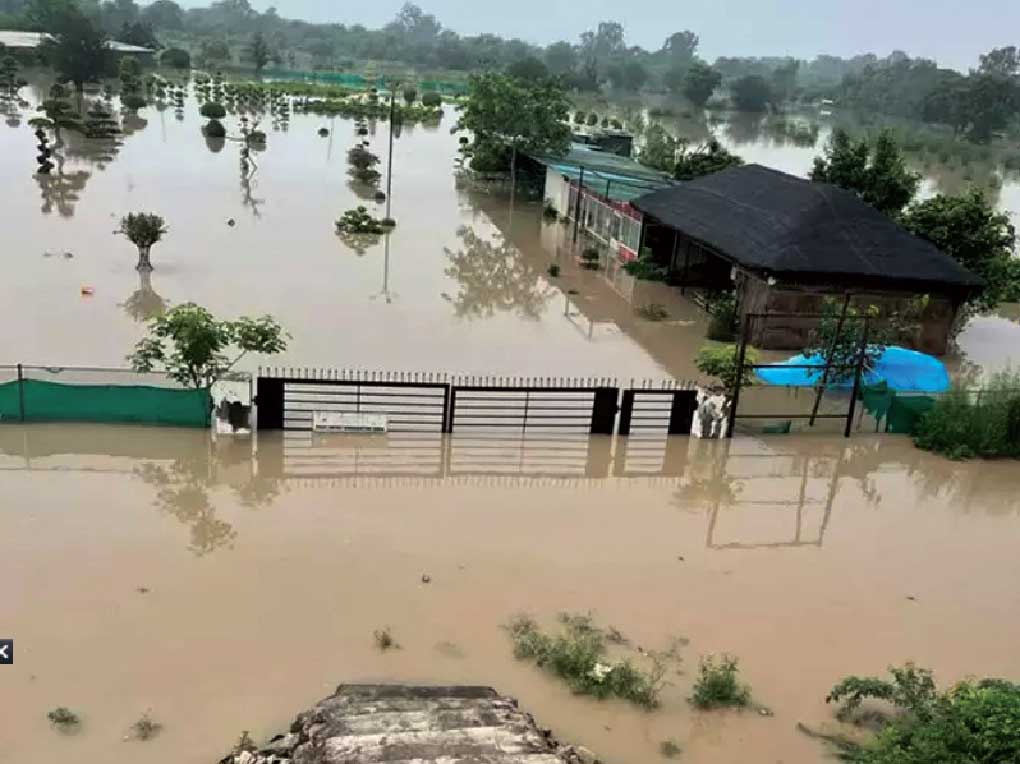
Gardeners need financial assistance
YP Singh said that due to the flood, the financial condition of the gardeners working in Yamuna Khadar has deteriorated. INA is providing free food to 2.5 thousand people daily in Noida. We have also sought an appointment with the DM of Noida, so that help can be obtained from the government. The association has also appealed to social organizations for help.
Flood Fury: Inundated plants destroyed at nursery
Poly bag plants, Cocopeat Bricks, Fertilizer, Indoor plants, Outdoor plants, Fruits plants, Decorative plants, Paan Variety Plants
INA Treasurer C. Gopinath said that there are 60-70 nurseries near the Bird Sanctuary in Noida, just after crossing Jasola. Big nurseries have suffered a loss of Rs 60-70 lakh. 3 to 5 tonnes of goods were brought from outside, which got ruined by drowning. The nursery people went back 4-5 years due to this flood. No one is paying attention to our suffering. There is no insurance of any kind. Saplings of nurseries have also died at ITO. Laborers, farmers, vendors all have stopped working. The huts on the banks were also submerged.


